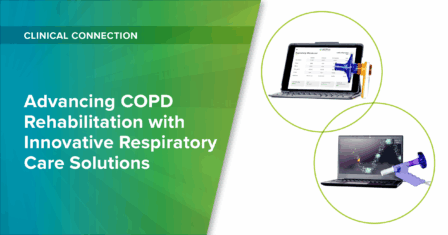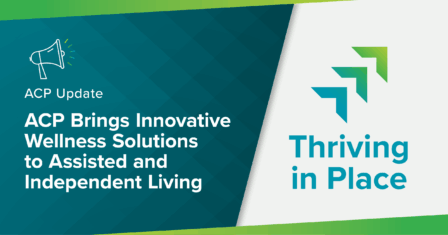Reversing Patient Frailty with Innovative Rehab Technologies
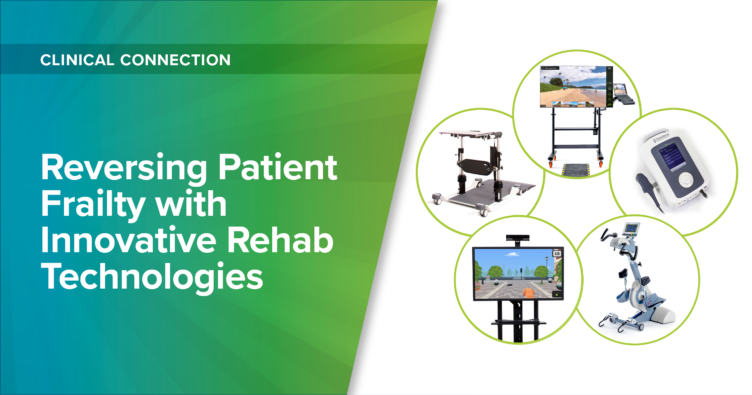
Patients with pulmonary dysfunction, those who are acutely ill, or those who have been hospitalized for extended periods often face the risk of deconditioning or developing muscle weakness. Even healthy individuals can become deconditioned and frail if they decrease their activity level.
While the negative impacts of short-term inactivity can typically be reversed in younger people, it is much more difficult for older adults.1 Frailty and pre-frailty are significant predictors of nursing home placement among community-dwelling older adults.2
That’s why it’s crucial for rehab professionals to continue emphasizing activity and engagement in therapy. Clinicians can leverage tools like ACP’s e-stim, cycling, virtual reality (VR), and balance trainers to maximize clinical outcomes.
Cycling
High-intensity interval training (HIIT) has been shown to increase cardiorespiratory fitness and exercise capacity for patients with COPD.3 For patients with heart failure, the American Physical Therapy Association (APTA) specifically recommends cycling as part of their aerobic and HIIT training.4
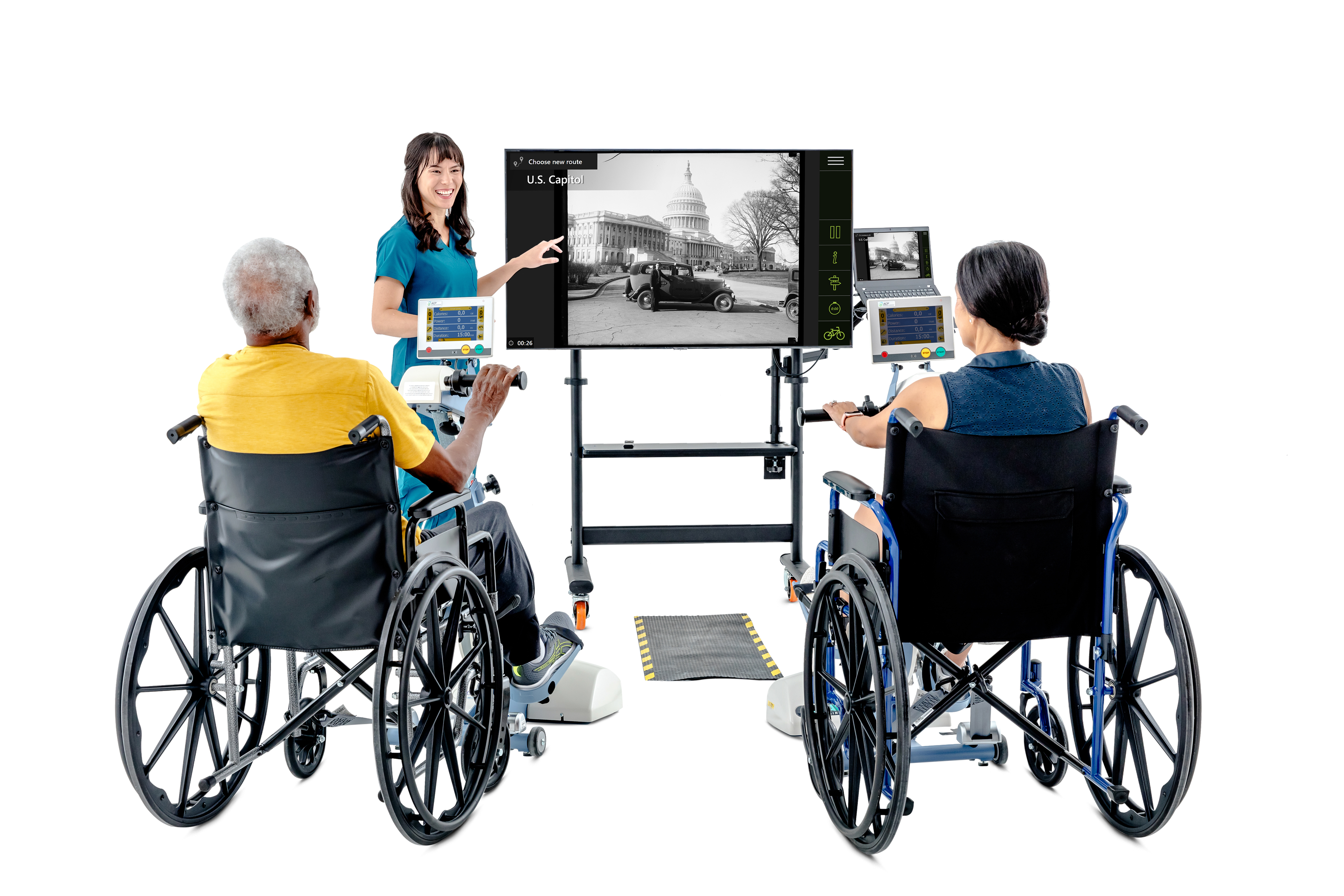
The OmniCycle® Connect is a great option for rehab gyms because it offers adjustable resistance levels and can adapt to patient’s physical limitations. Interval training may be used to increase the overall time and intensity of training. Paired with the OmniTour ™, patients can virtually cycle through outdoor landscapes, motivating them to train more often and with greater effort.
Virtual Reality
Therapy incorporating VR technology has been shown to increase patient motivation.5 With the OmniVR®, patients can perform exercises while sitting or standing, depending on their ability and the activity’s focus.
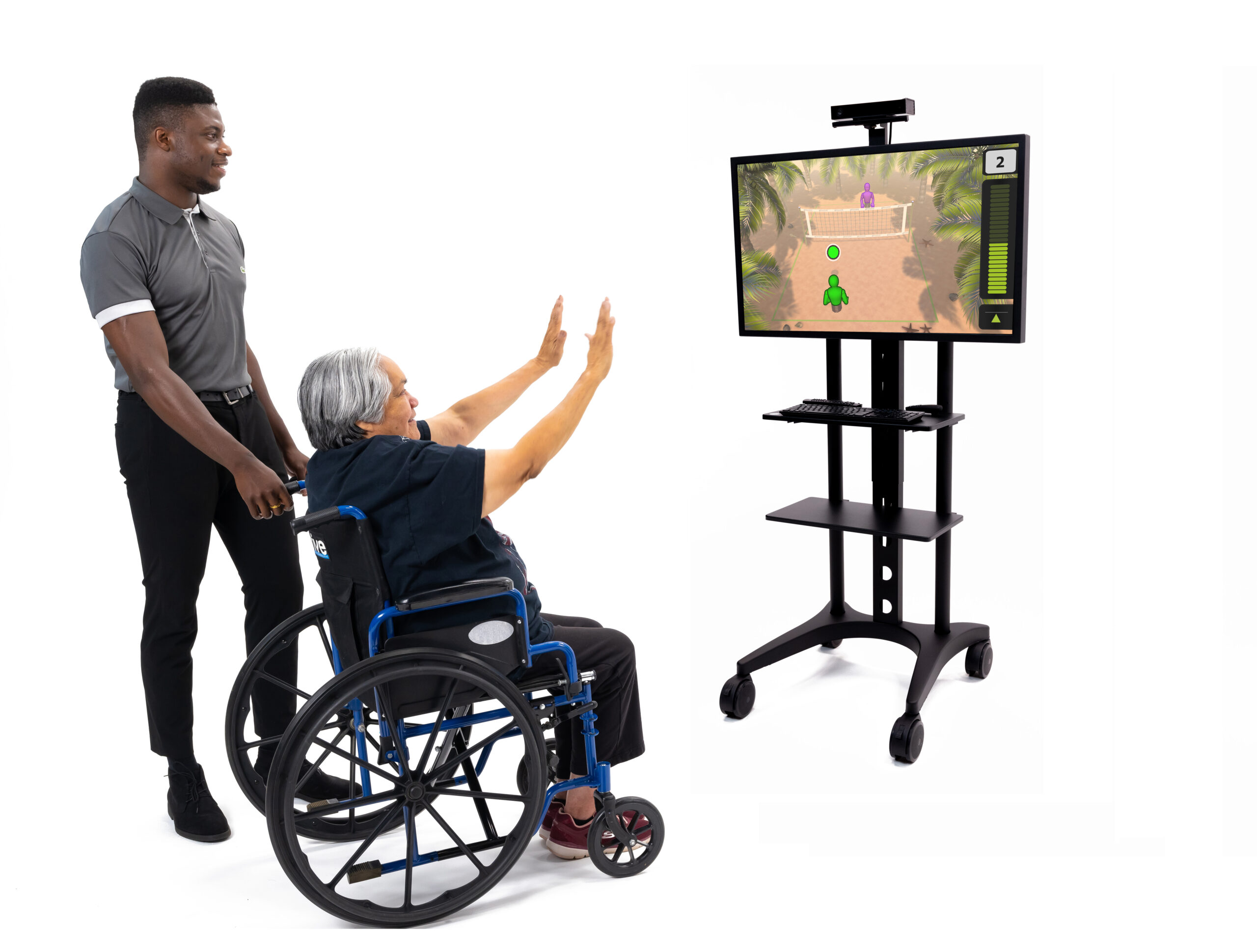
Balance Trainer
The OmniStand® is designed for patients who cannot stand independently, providing varied support and assistance. When combined with the OmniVR®, balance training becomes more fun and engaging, while also improving functional abilities.
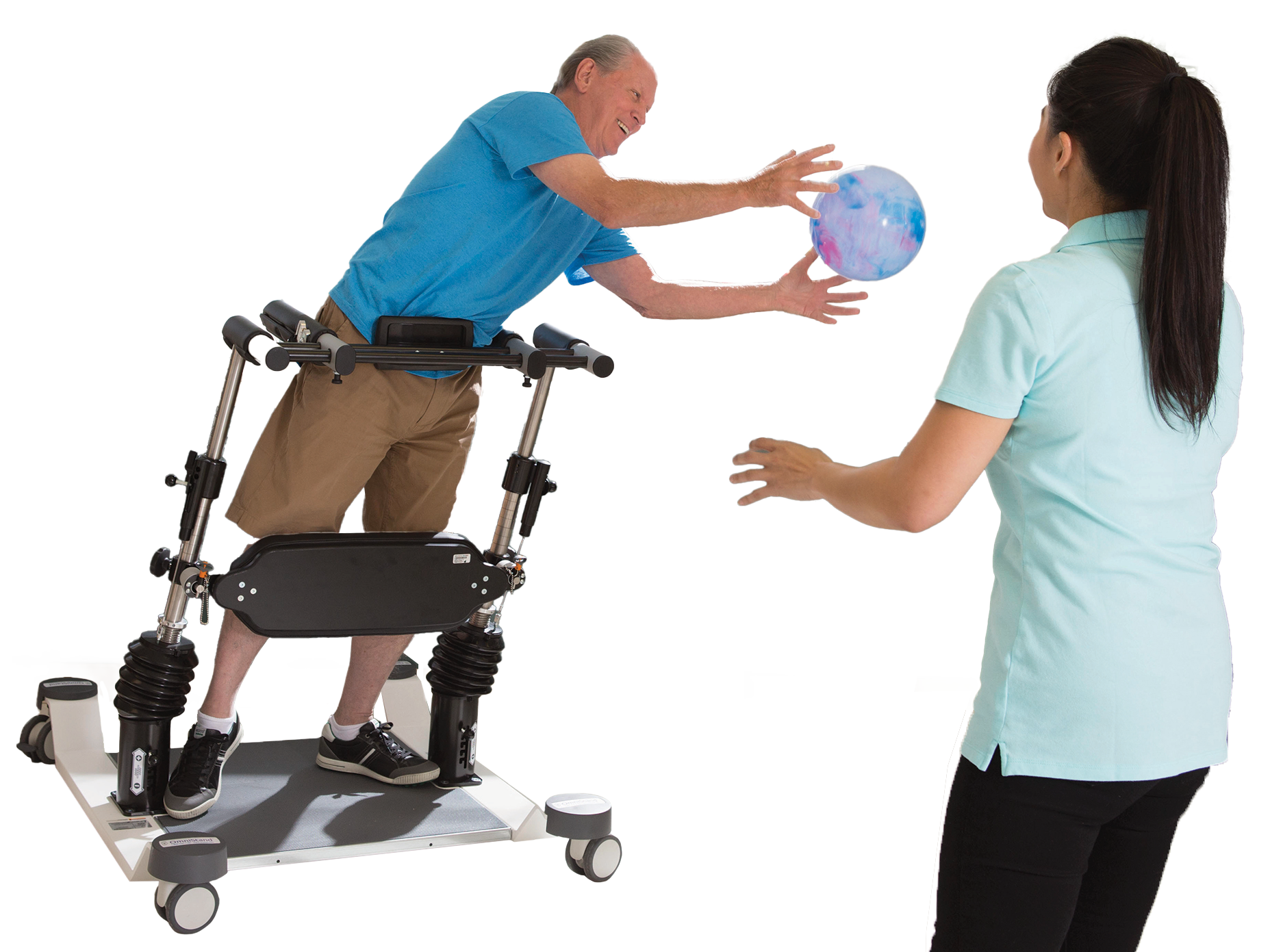
E-Stim
Patterned electrical neuromuscular stimulation (PENS) applied to the quadriceps and hamstring muscles of patients with COPD results in 30% increased strength and 34% increased walking distance.6 Using OmniVersa®‘s PENS function before or during exercise can help re-establish normal muscle recruitment and firing.
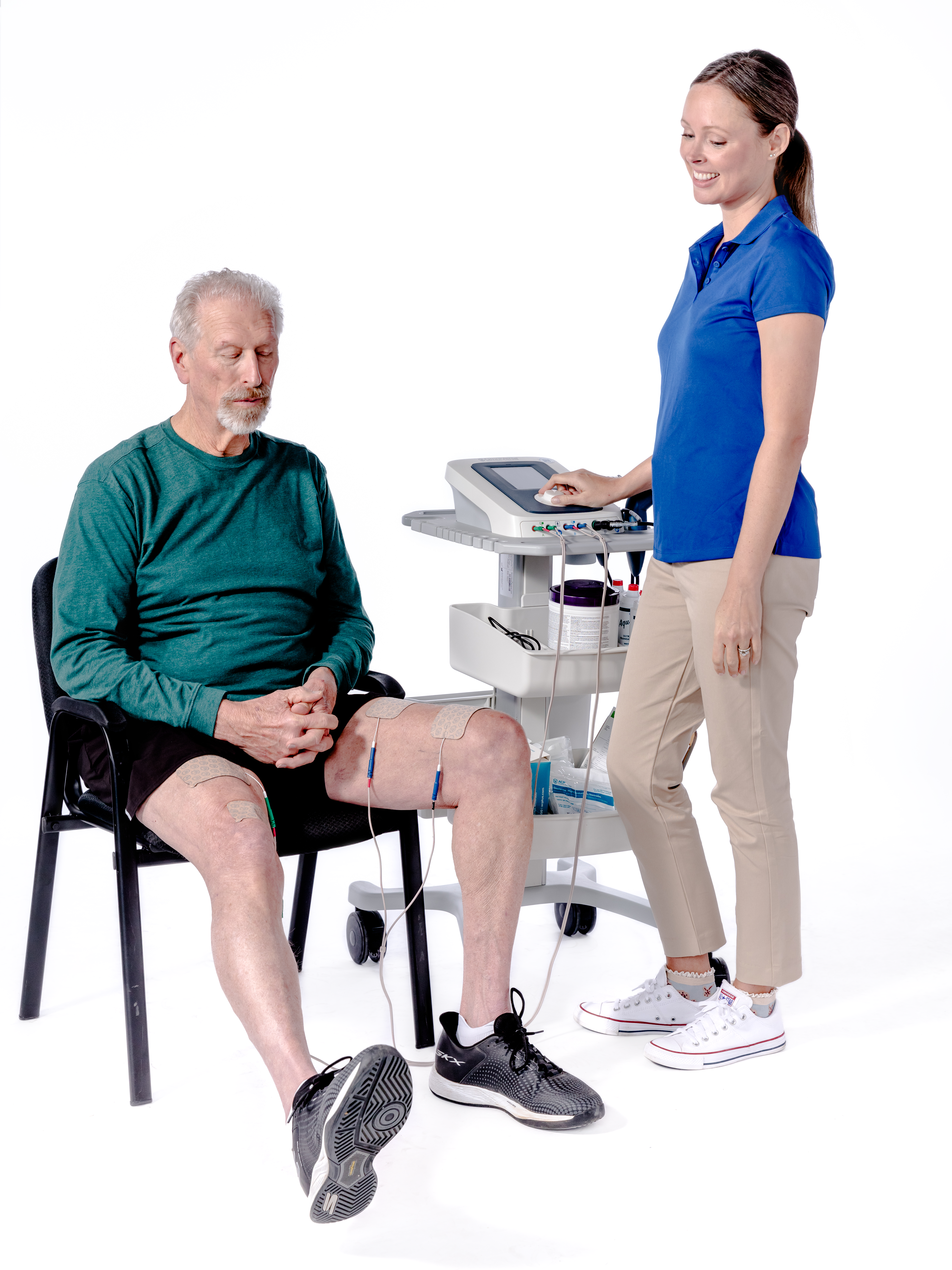
Thing to Keep in Mind
Vital signs like heart rate (HR), blood pressure (BP), O2 saturation, respiratory rate (RR), and rate of perceived exertion (RPE) should be assessed before, during, and after exercise to help determine the appropriate amount of activity or the need for rest. Clinicians should also use standardized outcome measures at the patient’s baseline and throughout treatment to track and document progress.
Upgrade Your Rehab Program
Looking to enhance your facility’s rehab gym? ACP offers a suite of technologies that help get your patients better, faster.
- Bowden Davies, K. A., Pickles, S., Sprung, V. S., Kemp, G. J., Alam, U., Moore, D. R., Tahrani, A. A., Cuthbertson, D. J. (2019). Reduced physical activity in young and older adults: metabolic and musculoskeletal implications. Therapeutic Advances in Endocrinology and Metabolism. 10, 1-15. ↩︎
- Gotaro, K. (2018). Frailty as a predictor of nursing home placement among community-dwelling older adults: A systematic review and meta-analysis. Journal of Geriatric Physical Therapy. 41(1), 42-48. Rutkowski, S., Rutkowska, A., Kiper, P., Jastrzebski, D., Racheniuk, H., Turolla, A., Szczegielniak, J., Casaburi, R. (2020). Virtual reality rehabilitation in patients with chronic obstructive pulmonary disease: A randomized controlled trial. International Journal of Chronic Obstructive Pulmonary Disease. 15, 117-124 ↩︎
- Sawyer, A. Cavalheri, V., Hill, K. (2020). Effects of high intensity interval training on exercise capacity in people with chronic pulmonary conditions: a narrative review. BMC Sports Medicine and Rehabilitation. 12, 22. https://doi.org/10.1186/s13102-020-00167-y ↩︎
- Shoemaker, M. J., Dias, K. J., Lefebvre, K. M., Heick, J. D., & Collins, S. M. (2020). Physical therapist clinical practice guideline for the management of individuals with heart failure. Physical Therapy, 100(1), 14-43. https://doi.org/10.1093/ptj/pzz127 ↩︎
- Kizmaz, E., Telli Atalay, O., Çetin, N., & Ugurlu, E. (2024). Virtual reality for COPD exacerbation: A randomized controlled trial. Respiratory Medicine, 230, 107696. https://doi.org/10.1016/j.rmed.2024.107696 ↩︎
- Bourjeily-Habr, G., Rochester, C. L., Palermo, F., Synder, P., Mohsenin, V. (2002). Randomized controlled trial of transcutaneous electrical nerve stimulation of the lower extremities in patients with chronic obstructive pulmonary disease. Thorax, 57(2), 1045-1049 ↩︎
MRK-BLOG-021
Patients with pulmonary dysfunction, those who are acutely ill, or those who have been hospitalized for extended periods often face the risk of deconditioning or developing muscle weakness. Even healthy individuals can become deconditioned and frail if they decrease their activity level. While the negative impacts of short-term inactivity can typically be reversed in younger people, it is much more difficult for older adults. Frailty and pre-frailty are significant predictors of nursing home placement among community-dwelling older adults. That’s why it’s crucial for rehab professionals to continue emphasizing activity and engagement in therapy. Learn how you can leverage tools like ACP’s e-stim, cycling, virtual reality (VR), and balance trainers to maximize clinical outcomes.
Latest Updates
Subscribe to stay up-to-date on our latest posts.

